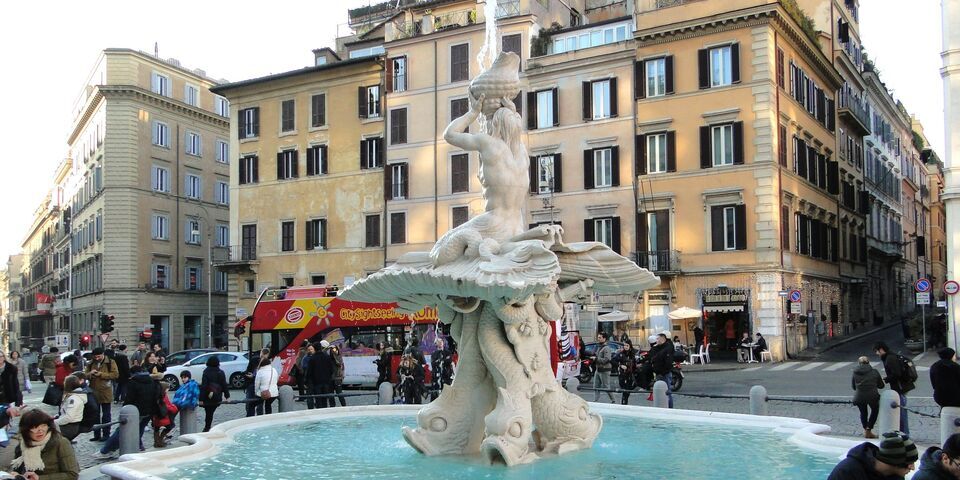

24882 views

| Tip | The easiest way to get to the fountain is by taking the metro to the Barberini station. Right near the fountain, you can also visit: the Capuchin Crypt, Fountain of the Bees, and quickly reach the famous Trevi Fountain. The square where the fountain of Triton is located is full of bars and restaurants, but try to avoid tourist places on the main squares because they are overpriced and often have worse food quality. |
|---|---|
| Closest bus stops |
|
| Closest subway stations |
|
| Address | P.za Barberini, 00187, Rome |
The Fountain of Triton (Fontana del Tritone), located in the Piazza Barberini in Rome, is a striking Baroque masterpiece created by the sculptor Gian Lorenzo Bernini. Commissioned by Pope Urban VIII in the 17th century, the fountain features a central figure of Triton, the Greek god of the sea, riding on a shell chariot pulled by seahorses. The dynamic and exquisitely detailed sculpture captures the essence of Bernini’s artistry, making it a notable landmark in the city.
Contents
ToggleThe Fountain of Triton, situated in the Piazza Barberini in Rome, is a significant Baroque masterpiece designed by the renowned Italian sculptor Gian Lorenzo Bernini. Commissioned by Pope Urban VIII in the 17th century, the fountain was part of a broader project to enhance the city’s water supply system and beautify its public spaces. The pope specifically tasked Bernini with creating a new fountain for the square before the Barberini Palace.
Gian Lorenzo Bernini began work on the Fountain of Triton in 1642 and completed it in 1643. The central focus of the fountain is the dynamic sculpture of Triton, the son of the sea god Neptune in Roman mythology, riding on a giant shell chariot pulled by four seahorses. Triton is depicted as a powerful and muscular figure, blowing a conch shell to symbolize the triumph of the Barberini family’s naval forces. The fountain’s design exudes a sense of movement and energy, characteristic of Bernini’s innovative Baroque style.
The Fountain of Triton is a testament to Bernini’s skill and creativity, representing a pivotal period in the Baroque era. It remains an iconic landmark in Rome, contributing to its rich artistic and architectural heritage. The fountain is an artistic masterpiece and a symbol of the Barberini family’s influence during the Baroque period in Rome’s history.
Read tips about what to see in 3 days in Rome.
Read also about Piazza Navona
Author: Kate Zusmann
This website uses cookies. For more info read the cookies policy
Rome.us © 2025. Created with love by Roman experts and guides.